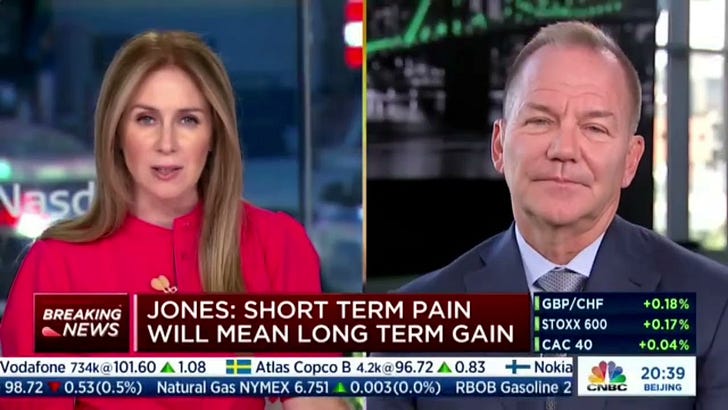Weekly Update: AI Startups Have Engineered Immunity to Market Conditions
A few highlights from the week of 10/17
Cloud stocks moved up this week, with the WCLD rising 7% to $26.06. For context, the index is still down a hefty 49% for the year. Overall, it was a good week for the broader tech market, with the NASDAQ up 5% (although down 31% for the year).
Perhaps we have already seen rock bottom?
Personally, I’m cautious of predictions. But one of the legends of macro investing, Paul Tudor Jones, suggests the rocky market conditions will continue:
Regardless of the macro, the micro these days in VC is “Desperately Seeking AI startups.” Particularly, Generative AI - the tech behind many of the most recent AI breakthroughs.
Perhaps most notable among the AI startups is OpenAI, the company behind powerful generative AI models such as GPT-3 & DALL-E 2.
Remarkably, OpenAI is raising money at a $20b valuation - a multiple approaching 1000x revenue!


Many VC’s seem ready to support OpenAI’s open source foes - Stability Diffusion, the company behind open source music- & image-generating systems like Dance Diffusion & Stable Diffusion, just raised 101m at a 1b valuation. Pre-revenue unicorns are rare these days, but still possible!
With a tsunami of venture capital rolling in, I’m not sure the AI category will be able to produce good returns from here. That said, with such a large market opportunity looming, it’s quite reasonable that the one or two big winners will eventually emerge as highly valuable tech stalwarts.
Podcast Recommendation of the Week:
The SaaStr podcast had a great interview Hubspot founders Dharmesh Shah & Brian Halligan. Hubspot solved one of the most brutally difficult problems in SaaS - they overcame a BIG churn problem.
Back in 2012, Hubspot had 75% NDR (net dollar retention). After 81% revenue growth in 2012, their annual revenue growth dropped to 50% in 2013. While 50% growth would normally seem a strong figure, that level of deceleration is quite worrisome.
The Hubspot founders realized that their best customer acquisition source was word-of-mouth.1 In the interview, they recount that they had a major shift in how they viewed their business. They realized that:
We’re in the customer delight business, not the customer acquisition business
They decided to shift budget away from sales & marketing and into product & customer success, making them one of the first & only cases of a SaaS business pivoting from sales-led to product-led.
It worked! If you bought the stock at its closing price on the day of its IPO in 2014, you’d have a 8x return today.
Reading Recommendation of the Week:
I highly recommend this wonderful primer on startup hiring by Eléonore Crespo, ex-VC and current CEO/co-founder of Pigment, the venture-backed FP&A platform. (link)
Arguably the hardest thing about hiring for a startup CEO is time. It takes a lot of time!
As a CEO, I currently spend about 30% of my time hiring but at the beginning, it was about 70%.
A good startup CEO is keenly aware of customer prospects. Every conversation with a prospect is an opportunity to make progress towards the critical goal of new sales. I would argue that a great CEO has the same awareness when talking to people, with the critical goal not new sales but building a world-class team.
In Crespo’s words:
With every person you meet, you should think: could this person be someone I hire or do they know someone who is right for my company?
It’s common for a startup CEO to want to focus their recruiting energy on candidates who are currently available. However, time is often better spent talking to not-available-candidates:
What’s interesting is that sometimes when you reach out to the best marketing VPs in the world, guess what – one of them might want to join your company.
Building a world-class team requires playing a classic “long game” - it’s not easy, but it’s the necessary path for building a truly iconic company.
While they didn’t explicitly say it, I would bet that they had a CAC (customer acquisition cost) figure that looked healthy overall but that was actually an average of two very distinct motions: inexpensive word-of-mouth/inbound and expensive outbound. They made the right call in attempting to scale the inexpensive channel, even though it was undoubtedly the harder path given it required such major operational changes.





